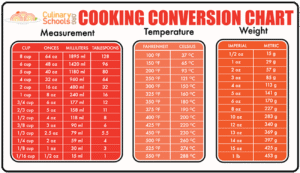When it comes to cooking and baking, measurements play an essential role in achieving the perfect taste, texture, and consistency. Even a small difference in quantity can make or break a recipe. That’s why it is important to know how to convert between different measuring units, especially tablespoons to cups, which  is one of the most common conversions in the kitchen.
is one of the most common conversions in the kitchen.
Whether you’re trying to follow a recipe, scale up for a family gathering, or reduce ingredients for a smaller batch, understanding these conversions can save time and prevent mistakes. In this article, we’ll explore everything you need to know about converting tablespoons to cups, why accuracy matters, and how to make your cooking process smoother.
Why Measuring Matters in Cooking and Baking
Unlike savory cooking, where you can adjust seasonings on the go, baking requires precision. A little extra flour or less sugar can change the entire outcome of your cake, cookies, or bread. That’s why bakers emphasize accurate measurement. Using the wrong unit or misunderstanding conversions may result in:
-
Dry cakes or cookies if you add too much flour.
-
Runny sauces if you use fewer thickeners than required.
-
Unbalanced flavors if spices are not measured properly.
Understanding tablespoon-to-cup conversions ensures consistency, especially when using recipes from different countries.
Tablespoons to Cups Conversion Basics
Let’s start with the simple rule:
-
1 cup = 16 tablespoons
-
1/2 cup = 8 tablespoons
-
1/4 cup = 4 tablespoons
-
3/4 cup = 12 tablespoons
This is the standard conversion you’ll use in most recipes.
Here’s a quick reference table:
| Cups | Tablespoons |
|---|---|
| 1 cup | 16 tbsp |
| 3/4 cup | 12 tbsp |
| 2/3 cup | 10 tbsp + 2 tsp |
| 1/2 cup | 8 tbsp |
| 1/3 cup | 5 tbsp + 1 tsp |
| 1/4 cup | 4 tbsp |
| 1/8 cup | 2 tbsp |
This table makes it easier to measure ingredients without pulling out a measuring cup every time.
Understanding Different Measurement Systems
It’s important to note that measurements may vary slightly depending on where you live.
-
United States: 1 tablespoon = 14.79 milliliters
-
United Kingdom / Canada: 1 tablespoon = 15 milliliters
-
Australia: 1 tablespoon = 20 milliliters
So, if you are using international recipes, you should double-check which tablespoon measurement the recipe is referring to. A small difference can make a noticeable change in delicate recipes like cakes, sauces, or custards.
Practical Examples of Tablespoon to Cup Conversions
Let’s say you’re following a recipe that calls for 1/2 cup of butter, but you only have a tablespoon handy. Since 1/2 cup equals 8 tablespoons, you can scoop butter with a tablespoon eight times to get the right amount.
Another example: If you need 3/4 cup of sugar, that would equal 12 tablespoons. Instead of guessing, you can measure accurately and avoid oversweetening your dish.
How to Measure Tablespoons and Cups Properly
Even with the right conversion knowledge, measuring the wrong way can still cause issues. Here are some tips:
-
Use the Right Tools – Invest in a good set of measuring cups and spoons. Avoid using regular dining spoons, as they are not accurate.
-
Level Ingredients – When measuring dry ingredients, always level them with a knife to ensure accuracy.
-
Pack or Not Pack? – Some ingredients like brown sugar need to be packed into the spoon or cup, while flour should be fluffed and lightly scooped.
-
Liquid vs. Dry – Use liquid measuring cups for milk, water, or oil, and dry cups for flour, sugar, or cocoa powder.
When and Why You Need Conversions
Sometimes recipes are written in tablespoons when you want to scale them up to larger quantities, or in cups when you only need a small portion. Here are a few scenarios:
-
Scaling Recipes Up or Down: If a recipe calls for 2 cups of flour but you only want to make half the batch, you’ll need to measure 1 cup or 16 tablespoons.
-
Ingredient Substitution: If your measuring cup is missing, you can easily switch to tablespoons.
-
International Recipes: If you’re following a recipe from a blog or cookbook outside your region, conversion helps keep measurements consistent.
Common Kitchen Conversions Beyond Tablespoons to Cups
While tablespoons-to-cups is common, here are other conversions worth knowing:
-
1 cup = 8 fluid ounces
-
1 tablespoon = 3 teaspoons
-
1 cup = 48 teaspoons
-
1 pint = 2 cups
-
1 quart = 4 cups
These conversions are handy when dealing with various ingredients, especially liquids and dry goods.
Tips for Remembering Tablespoon to Cup Conversions
-
The 16 Rule: Always remember that 16 tablespoons equal 1 cup.
-
Half Rule: Half a cup equals 8 tablespoons.
-
Quarter Rule: Quarter cup equals 4 tablespoons.
-
Visualize: Think of a cup as being divided into 16 equal parts.
Digital Tools and Measuring Apps
In today’s digital age, you don’t need to memorize everything. Several apps and kitchen conversion calculators can help you quickly convert tablespoons to cups and vice versa. Smart kitchen scales also allow you to measure directly in grams, tablespoons, or cups, making the process even more accurate.
Conclusion
Understanding how to convert tablespoons to cups is an essential skill for anyone who enjoys cooking or baking. Precision matters, and even small measurement errors can lead to disappointing results. With the conversion chart and tips provided above, you’ll never have to second-guess your measurements again.
Next time you’re in the kitchen and see a recipe calling for cups while you only have a tablespoon handy, you’ll know exactly what to do. Whether you’re a beginner or an experienced cook, mastering these conversions will save time, reduce waste, and help you create delicious meals with confidence.





